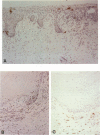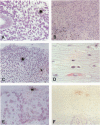Abstract
Despite the fact that human immunodeficiency virus (HIV) is transmitted primarily by sexual contact, the biology of the sexual transmission of HIV is poorly understood. Simian immunodeficiency virus (SIV) can be transmitted to female rhesus macaques by placing cell-free virus into the vaginal canal, and SIV can be isolated from the vaginal secretions of infected rhesus macaques. The authors examined the genital tracts from 16 chronically infected female rhesus macaques and localized SIV-infected cells using in situ hybridization and immunohistochemistry. SIV-infected cells were found in the genital tract of 13 of the 16 animals examined, and in most cases the SIV-infected cells were located in the submucosa of the cervix and vagina. However, SIV-infected cells were also found in the vaginal epithelium. SIV-infected cells were more common in sites of inflammation than in normal areas. These findings suggest that SIV gains access to genital tract secretions from the cervix and vaginal epithelium.
Full text
PDF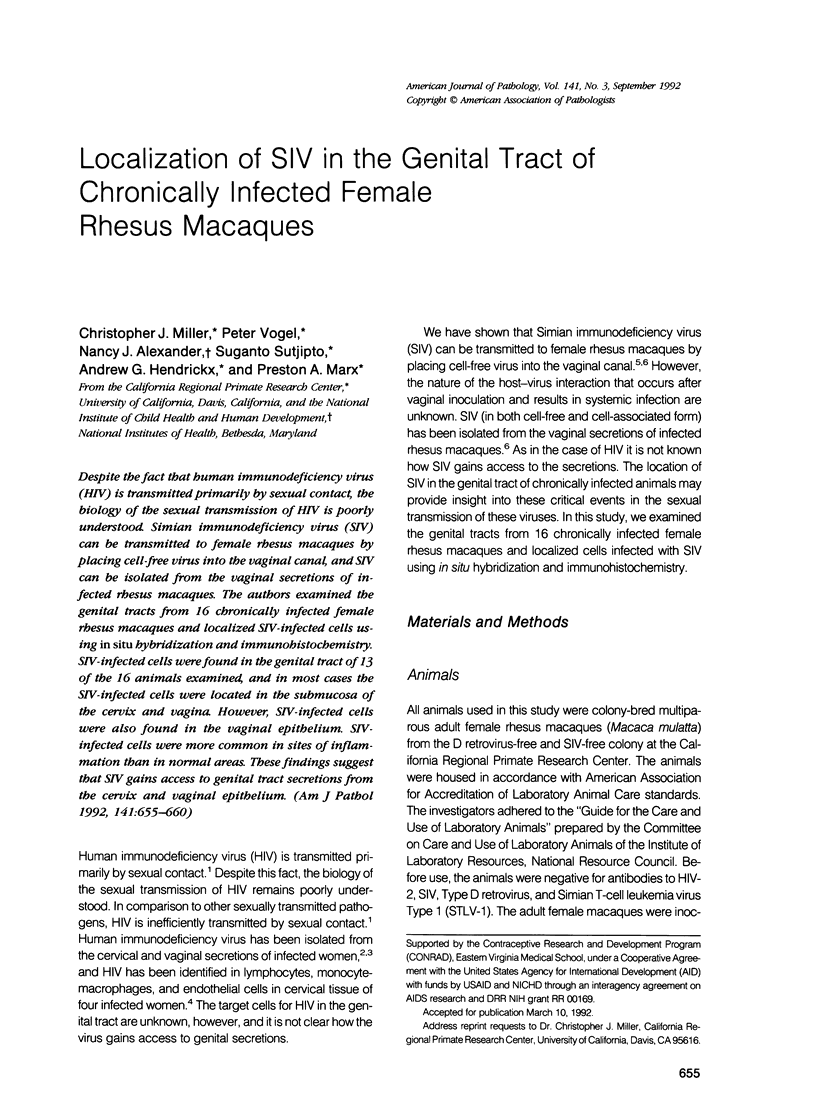
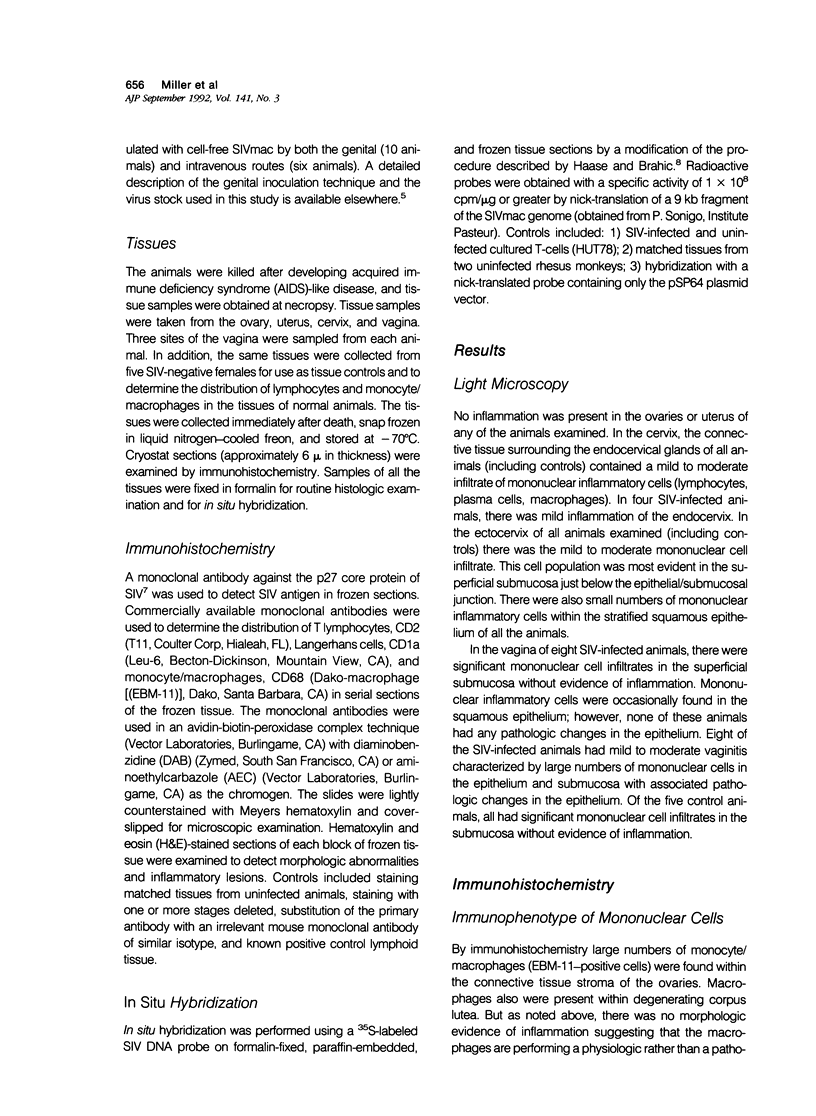
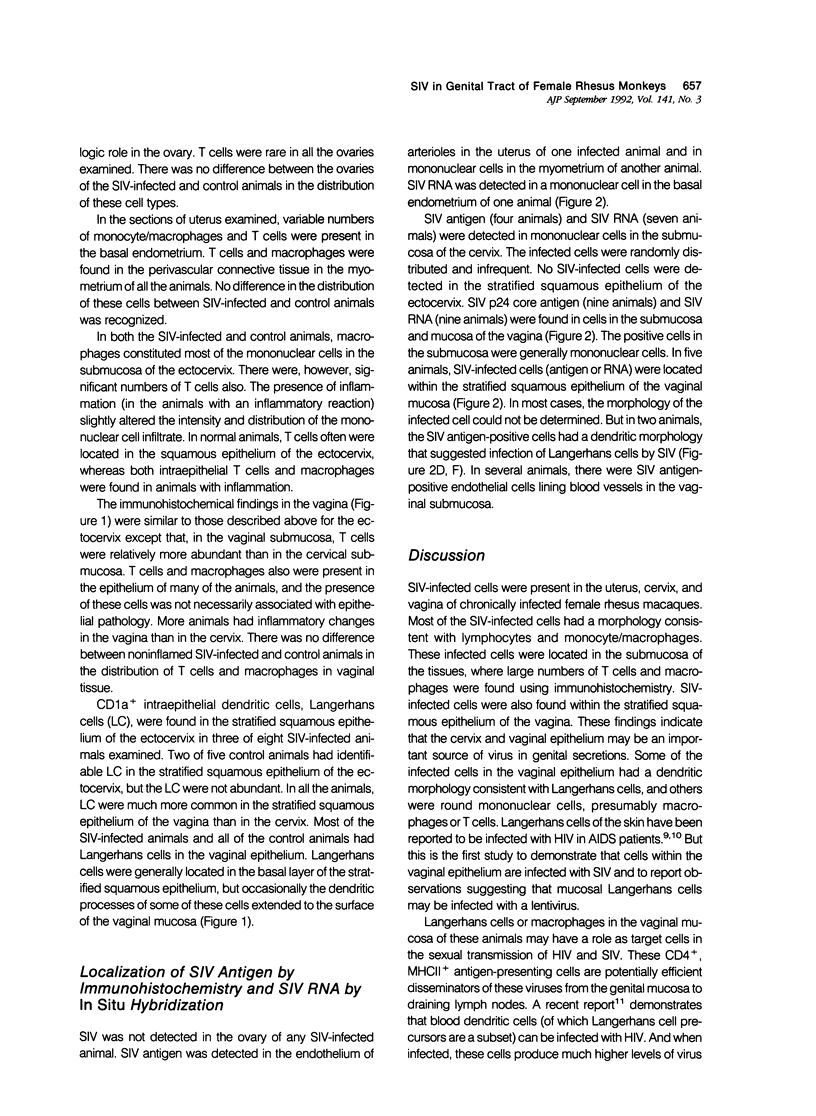
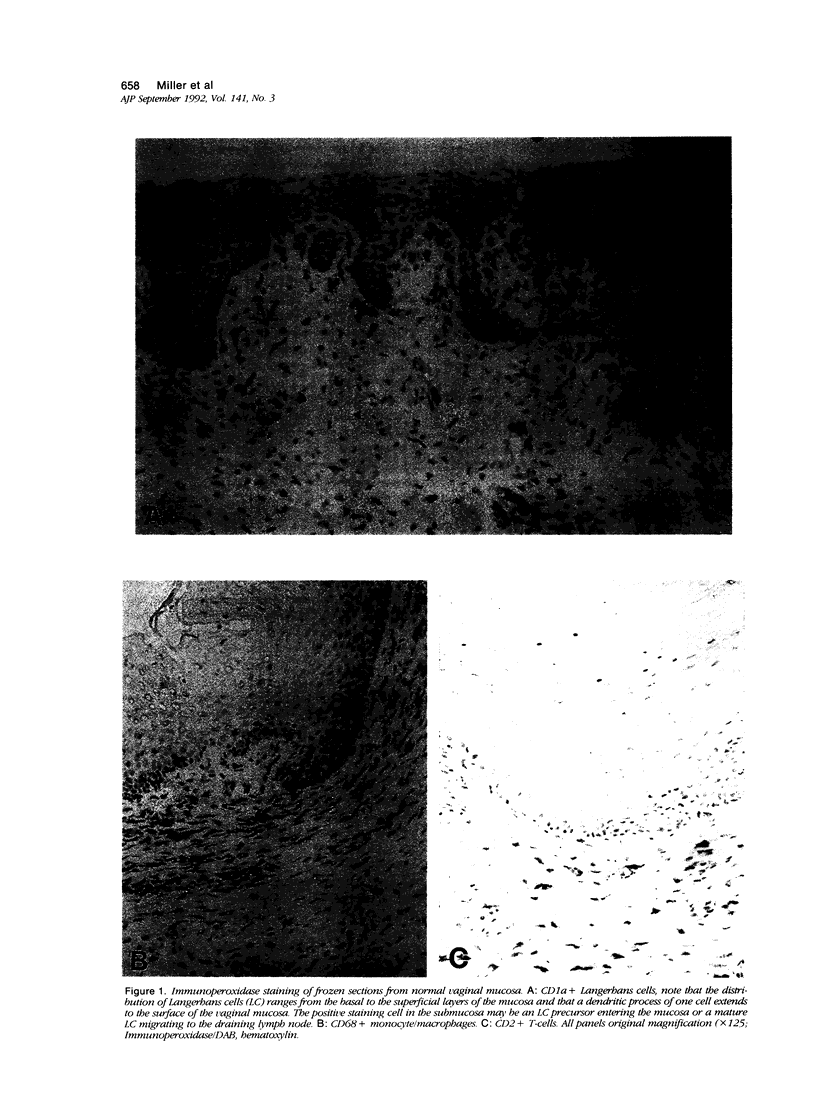
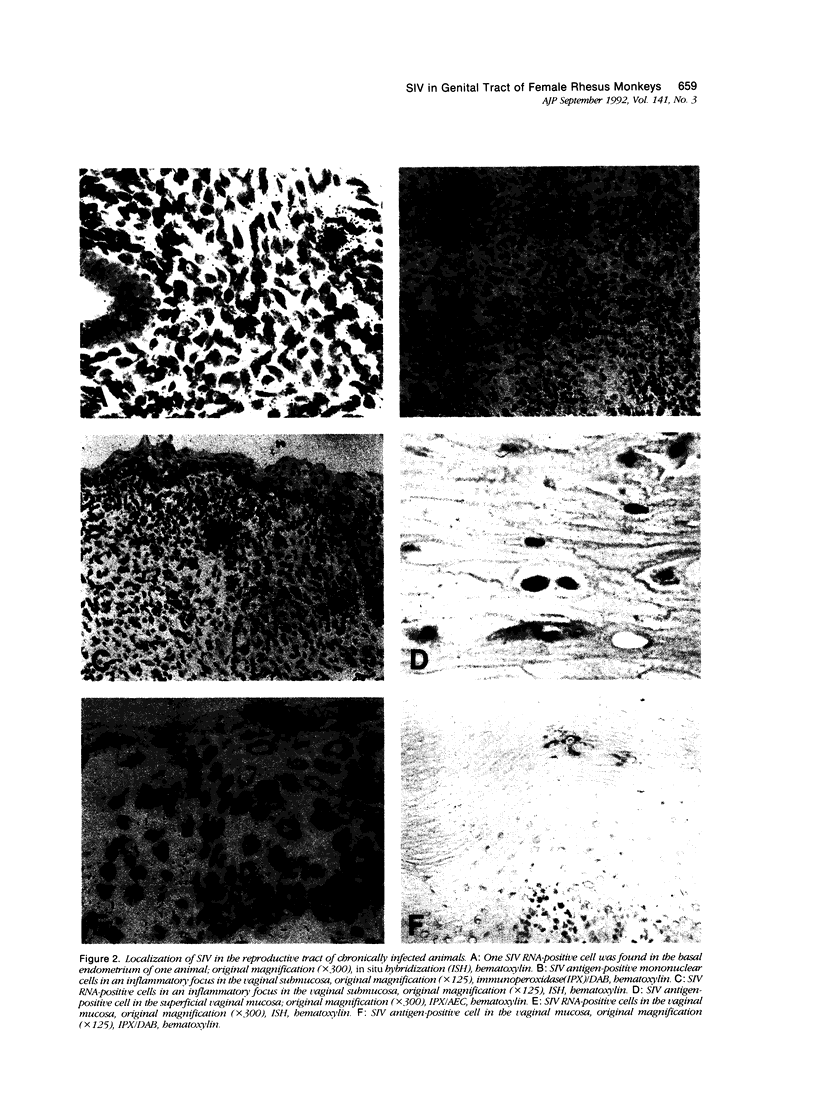
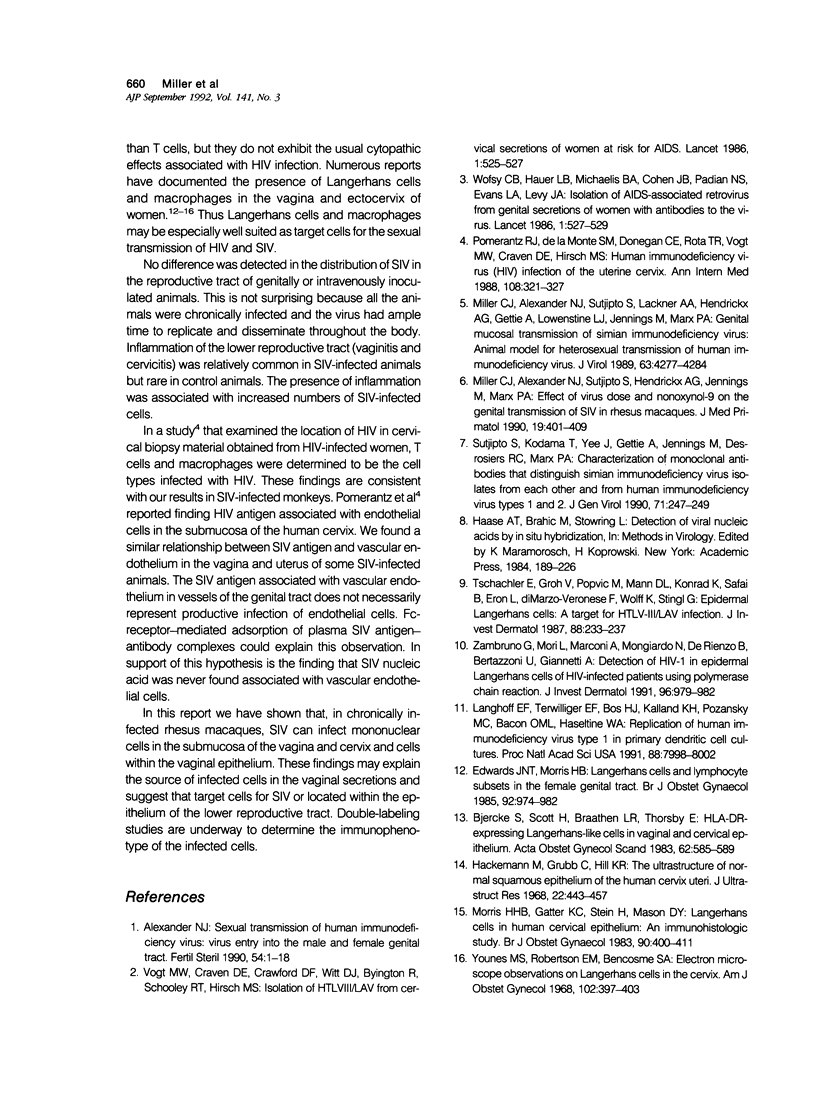
Images in this article
Selected References
These references are in PubMed. This may not be the complete list of references from this article.
- Alexander N. J. Sexual transmission of human immunodeficiency virus: virus entry into the male and female genital tract. World Health Organization, Global Programme on Acquired Immune Deficiency Syndrome. Fertil Steril. 1990 Jul;54(1):1–18. doi: 10.1016/s0015-0282(16)53628-0. [DOI] [PubMed] [Google Scholar]
- Bjercke S., Scott H., Braathen L. R., Thorsby E. HLA-DR-expressing Langerhans'-like cells in vaginal and cervical epithelium. Acta Obstet Gynecol Scand. 1983;62(6):585–589. doi: 10.3109/00016348309156253. [DOI] [PubMed] [Google Scholar]
- Edwards J. N., Morris H. B. Langerhans' cells and lymphocyte subsets in the female genital tract. Br J Obstet Gynaecol. 1985 Sep;92(9):974–982. doi: 10.1111/j.1471-0528.1985.tb03080.x. [DOI] [PubMed] [Google Scholar]
- Hackemann M., Grubb C., Hill K. R. The ultrastructure of normal squamous epithelium of the human cervix uteri. J Ultrastruct Res. 1968 Mar;22(5):443–457. doi: 10.1016/s0022-5320(68)90033-6. [DOI] [PubMed] [Google Scholar]
- Langhoff E., Terwilliger E. F., Bos H. J., Kalland K. H., Poznansky M. C., Bacon O. M., Haseltine W. A. Replication of human immunodeficiency virus type 1 in primary dendritic cell cultures. Proc Natl Acad Sci U S A. 1991 Sep 15;88(18):7998–8002. doi: 10.1073/pnas.88.18.7998. [DOI] [PMC free article] [PubMed] [Google Scholar]
- Miller C. J., Alexander N. J., Sutjipto S., Joye S. M., Hendrickx A. G., Jennings M., Marx P. A. Effect of virus dose and nonoxynol-9 on the genital transmission of SIV in rhesus macaques. J Med Primatol. 1990;19(3-4):401–409. [PubMed] [Google Scholar]
- Miller C. J., Alexander N. J., Sutjipto S., Lackner A. A., Gettie A., Hendrickx A. G., Lowenstine L. J., Jennings M., Marx P. A. Genital mucosal transmission of simian immunodeficiency virus: animal model for heterosexual transmission of human immunodeficiency virus. J Virol. 1989 Oct;63(10):4277–4284. doi: 10.1128/jvi.63.10.4277-4284.1989. [DOI] [PMC free article] [PubMed] [Google Scholar]
- Morris H. H., Gatter K. C., Stein H., Mason D. Y. Langerhans' cells in human cervical epithelium: an immunohistological study. Br J Obstet Gynaecol. 1983 May;90(5):400–411. doi: 10.1111/j.1471-0528.1983.tb08935.x. [DOI] [PubMed] [Google Scholar]
- Pomerantz R. J., de la Monte S. M., Donegan S. P., Rota T. R., Vogt M. W., Craven D. E., Hirsch M. S. Human immunodeficiency virus (HIV) infection of the uterine cervix. Ann Intern Med. 1988 Mar;108(3):321–327. doi: 10.7326/0003-4819-108-3-321. [DOI] [PubMed] [Google Scholar]
- Sutjipto S., Kodama T., Yee J., Gettie A., Jennings M., Desrosiers R. C., Marx P. A. Characterization of monoclonal antibodies that distinguish simian immunodeficiency virus isolates from each other and from human immunodeficiency virus types 1 and 2. J Gen Virol. 1990 Jan;71(Pt 1):247–249. doi: 10.1099/0022-1317-71-1-247. [DOI] [PubMed] [Google Scholar]
- Tschachler E., Groh V., Popovic M., Mann D. L., Konrad K., Safai B., Eron L., diMarzo Veronese F., Wolff K., Stingl G. Epidermal Langerhans cells--a target for HTLV-III/LAV infection. J Invest Dermatol. 1987 Feb;88(2):233–237. doi: 10.1111/1523-1747.ep12525402. [DOI] [PubMed] [Google Scholar]
- Vogt M. W., Witt D. J., Craven D. E., Byington R., Crawford D. F., Schooley R. T., Hirsch M. S. Isolation of HTLV-III/LAV from cervical secretions of women at risk for AIDS. Lancet. 1986 Mar 8;1(8480):525–527. doi: 10.1016/s0140-6736(86)90884-6. [DOI] [PubMed] [Google Scholar]
- Wofsy C. B., Cohen J. B., Hauer L. B., Padian N. S., Michaelis B. A., Evans L. A., Levy J. A. Isolation of AIDS-associated retrovirus from genital secretions of women with antibodies to the virus. Lancet. 1986 Mar 8;1(8480):527–529. doi: 10.1016/s0140-6736(86)90885-8. [DOI] [PubMed] [Google Scholar]
- Younes M. S., Robertson E. M., Bencosme S. A. Electron microscope observations on Langerhans cells in the cervix. Am J Obstet Gynecol. 1968 Oct 1;102(3):397–403. doi: 10.1016/0002-9378(68)90012-4. [DOI] [PubMed] [Google Scholar]
- Zambruno G., Mori L., Marconi A., Mongiardo N., De Rienzo B., Bertazzoni U., Giannetti A. Detection of HIV-1 in epidermal Langerhans cells of HIV-infected patients using the polymerase chain reaction. J Invest Dermatol. 1991 Jun;96(6):979–982. doi: 10.1111/1523-1747.ep12476469. [DOI] [PubMed] [Google Scholar]



